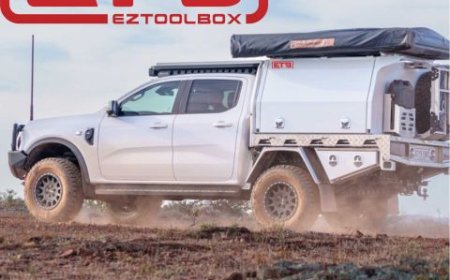The Impact of Speaker Placement on Sound Imaging in Your Car

A great car audio system isnt just about loud bass or crystal-clear vocalsits about how your entire setup makes you feel. One of the most underrated elements of that experience is sound imagingthe illusion that your music is coming from a stage right in front of you, not from individual speakers around the car. Achieving proper imaging requires attention to speaker placement, tuning, and the right supporting equipmentincluding a dedicated amp for highs that ensures detail and precision.
In this article, well explore how speaker placement affects imaging, why it matters, and how to optimize your setup for the most immersive listening experience possible.
? What Is Sound Imaging?
Sound imaging refers to the spatial placement of instruments and vocals in a stereo sound field. In a properly set-up system, you can "hear" where each sound is coming fromleft to right, front to back, and even vertically.
In a car, creating this illusion is harder than in a home environment because:
-
Seating positions are off-center
-
Speaker locations are limited by vehicle design
-
Cabin reflections and materials color the sound
Still, with thoughtful speaker placement and proper tuning, its absolutely possible to create a convincing front-stage and realistic stereo image inside a vehicle.
? Why Speaker Placement Matters
Car manufacturers typically place factory speakers in doors, dashes, and rear deckslocations chosen for convenience, not acoustic performance. These positions often result in:
-
Poor stereo separation
-
Imbalanced time arrival
-
Weak center image
When you upgrade your speakers and install them more strategically, you can transform your soundstage. Heres how placement influences imaging:
1. Front vs Rear Speakers
-
The front stage should always be the focus.
-
Rear speakers often muddy imaging and should be faded down or used for fill only.
2. Tweeter Placement
-
Tweeters handle high frequencies, which are very directional.
-
Poor tweeter placement can cause harshness or imbalance.
-
Mounting tweeters on the A-pillars, dash corners, or sail panelsangled toward your earshelps improve clarity and focus.
3. Midrange Driver Location
-
Midbass and midrange drivers contribute to the body of vocals and instruments.
-
Placing them lower in the door can work, but they must be aimed or EQd properly to avoid sounding muffled.
4. Subwoofer Placement
-
Subs are less critical for imaging since low frequencies are nondirectional.
-
Still, placement affects cabin gain and how well bass blends with front-stage speakers.
? Common Speaker Placement Options (And Their Impact)
| Placement Location | Pros | Cons |
|---|---|---|
| Kick Panels | Great imaging, equidistant to both ears | Requires fabrication, limited space |
| A-Pillars (Tweeters) | Improved directionality, better staging | Can be harsh if not aimed or EQd properly |
| Door Panels | Easy access, factory integration | Off-axis response can degrade imaging |
| Dash Corners | Good for tweeters, wider stereo effect | Can reflect off windshield and create distortion |
| Rear Deck | Useful for fill, not recommended for imaging | Can smear front-stage focus |
? Time Alignment and Tuning
Even with ideal placement, time alignment is critical. Since the driver's seat is closer to the left-side speakers, sound from that side reaches your ears sooner, skewing the image.
Modern DSPs and high-end head units offer digital time alignment, allowing you to delay the signal from closer speakers so everything reaches your ears at the same time.
This is key to centering vocals and making your system sound cohesive. It also helps improve the performance of your tweeters, especially when powered by a clean and capable amp for highs that can reproduce subtle timing and detail.
? The Role of Amplification in Imaging
Speaker placement alone wont give you good imaging if your signal is weak, distorted, or poorly powered. For mids and especially highs, clean amplification is essential.
Why You Need a Dedicated Amp for Highs:
-
High frequencies are detail-rich and unforgiving of distortion.
-
Tweeters and midrange drivers need low-noise, high-resolution power.
-
A quality amp for highs helps maintain separation, clarity, and dynamic response, even at moderate to high volumes.
This becomes even more important when you're using active crossovers or a DSPbecause precision matters most when you're working with the fine edges of sound.
? System Example: Optimizing Imaging in a 2-Way Setup
Heres a simple example of how to configure a basic front-stage setup for imaging:
Components:
-
6.5 Midrange mounted in lower door
-
1 Tweeters mounted in sail panel or A-pillar
-
DSP or head unit with time alignment
-
4-channel amplifier (use one of the channels as your dedicated amp for highs)
Tips:
-
Cross over tweeters at 3.5 kHz or higher
-
Aim tweeters toward opposite headrests or listeners ears
-
Use test tones or RTA software to level-match output
-
Apply EQ adjustments sparingly to correct reflection issues
? Other Tips to Improve Imaging
-
Deadening: Use sound-deadening materials to reduce reflections and rattles in doors.
-
Speaker baffles or pods: Help isolate and direct sound into the cabin.
-
EQ wisely: Dont boost excessivelycut frequencies to shape the sound.
-
Avoid mixing brands for mids and highs unless you're experienced with tuning.
? Imaging vs Soundstage
While related, imaging and soundstage are not the same:
-
Imaging is about pinpointing where each sound comes from (vocals center, guitar left, hi-hat right).
-
Soundstage is about the size and depth of that stage.
Good placement and amplification improve bothbut placement affects imaging more directly, especially in a cars asymmetrical cabin.
Final Thoughts
Achieving great sound in your vehicle isnt just about buying the best gear. Its about placing it properly, tuning it smartly, and making sure each component complements the others.
Speaker placementespecially for your mids and tweetersplays a massive role in how realistic and immersive your music sounds. Even with high-end drivers, poor placement can ruin imaging. And without proper power from a quality amp for highs, even the best-placed tweeters wont shine.
So take the time to mount your gear thoughtfully, power it cleanly, and tune it patiently. Your earsand your musicwill thank you.


































